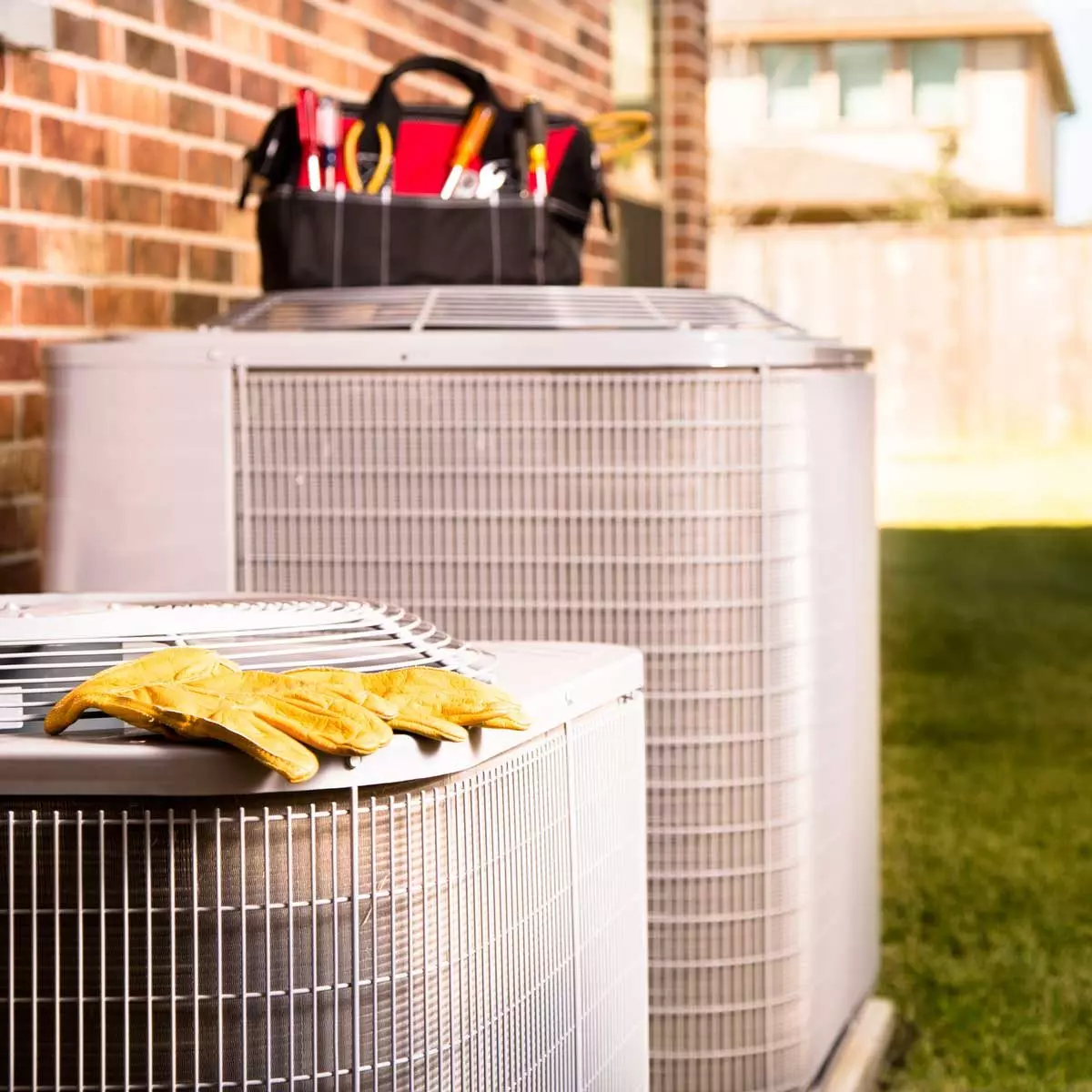 Image Source: fstop123 via Getty Images
Image Source: fstop123 via Getty Images
Are you feeling the heat? Is your central air conditioner failing to provide the cool relief you desperately need? Don't worry; we've got you covered. In this article, we'll explore some simple troubleshooting steps to help you understand why your central air conditioner isn't cooling as it should.
A Quick Refresher on Central Air Conditioning
Before we dive into the troubleshooting steps, let's brush up on some central air conditioning terminology. Central air conditioners work by compressing a fluid refrigerant, which flows between two sets of metal coils. The cold coils, known as the evaporator coils, draw air and then circulate it back into your home through ducts and dampers. The temperature is controlled by the thermostat, while the control board regulates the entire system.
For the purpose of this article, we're assuming you have a split-unit central air conditioner. This means the evaporator coil is inside your house, while the condenser unit, coils, and compressor are located outside.
Power Issues
When your central AC isn't cooling, begin with the simplest troubleshooting step - checking the power. Verify that your AC unit is receiving power by examining the circuit breaker at the panel, the disconnect switch for the exterior unit, and the power switch for your furnace or heat pump. Sometimes, the furnace or heat pump's power switch can be accidentally bumped, resulting in a loss of power. Fortunately, the solution is as simple as flipping the switch.
Air Flow Problems
In central air conditioners, nothing causes more issues or is easier to repair than air flow problems. The air flow is driven by a large fan, known as the "blower," located inside your home.
Start by inspecting the furnace filter. If it's dirty, replace it immediately. A dirty filter restricts air from crossing the evaporator coils, causing the cooling power to remain trapped inside the AC unit instead of being spread throughout your home. Remember to change the filter regularly to allow your AC to breathe.
Ductwork Troubleshooting
If the fan is running and the filter is clean, check the trunk of the ductwork just past the blower. If it feels cold, there may be an obstruction further down the line that is blocking the air flow. In this case, it's time to troubleshoot your ducts.
Damaged Ductwork and Dampers
Many homes have dampers in the ductwork, allowing you to direct more air to specific areas of your home depending on the season. If the dampers are misaligned or damaged, they can act as roadblocks, preventing the cold air from reaching where it's needed. Similarly, damaged or leaky ducts can allow cold air to escape, reducing the cooling efficiency. Consider inspecting and repairing your ducts if necessary.
Vent Check
Take a look at the adjustable vents in most rooms of your home. Ensure they aren't covered or obstructed. If possible, use a flashlight to check for any dust build-up that may require air duct cleaning.
Troubleshooting the Evaporator Coils
Excess water dripping off the AC cabinet or ice forming around the refrigerant line indicates that your evaporator coils may be producing ice, disrupting the air flow. This leads to higher energy bills and poor cooling performance.
To troubleshoot this issue, turn off the AC for 24 hours and set the fan to On or Fan Only mode to allow warm air to flow over the coils. (Remember to change the filter as well, as initial ice buildup is often caused by poor airflow.) If the ice reappears after restarting the system, you may have a refrigerant issue that requires professional attention.
Dirty Condenser Coils
Central air conditioners transfer heat from the interior of your home to the outside. If the condenser coils are obstructed by dirt, leaves, or debris, the heat cannot escape effectively. This can cause your central AC to work intermittently, with short bursts of cooling followed by lukewarm air from the vents. To resolve this, start by cleaning the air conditioning condenser unit.
Capacitor Replacement
If the exterior unit isn't turning on at all, the capacitor may need to be replaced. While this can be a DIY repair, it's crucial to note that working with electronics can be dangerous. Remember that capacitors can hold a lethal charge! If you're not comfortable with electronics, it's best to seek professional assistance.
Compressor and Refrigerant Issues
Unfortunately, more complex issues with the compressor and refrigerant may require professional attention. Air conditioning systems are closed systems, and low refrigerant levels usually indicate a leak. Refilling the refrigerant without fixing the leak is only a temporary solution.
If your refrigerant levels are low, take note of the type of refrigerant your system uses and consider this when getting estimates. If you have an older Freon-based system that is being phased out, it may be time to consider replacing your central AC unit.
Remember, maintaining your central air conditioner and addressing issues promptly can help prolong its lifespan and ensure efficient cooling throughout your home. Stay cool and comfortable!
 Image Source: fstop123 via Getty Images
Image Source: fstop123 via Getty Images

















